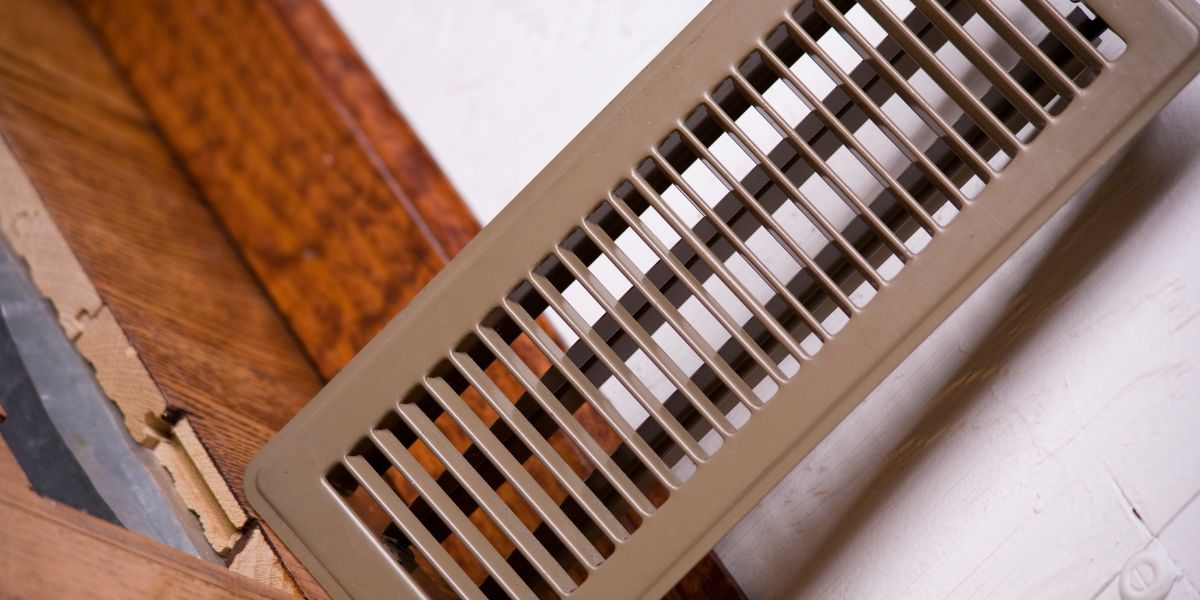Wondering if in-floor heat registers are available? Learn about in-floor heat register options, their benefits, and whether they’re the right choice for your heating system.
Do In-Floor Heat Registers Exist?
1. Introduction
- Hook: Mention the common struggle to balance aesthetics with functionality in home heating systems.
- Importance: Explain why heat registers play a significant role in distributing warmth effectively throughout a room.
- Purpose: Introduce the article’s goal to explain whether in-floor heat registers exist, what they are, and their advantages.
2. What Are In-Floor Heat Registers?
- Definition: Describe in-floor heat registers as grilles or vents installed within the floor that allow warm air from the heating system to circulate upward.
- Purpose: Explain how they work to direct airflow into the room efficiently.
- Compatibility with Heating Systems: Note that in-floor registers are typically used with forced-air heating systems, where air is pushed through ducts and exits via floor registers.
3. Types of Heat Registers and Their Installation
- Standard Heat Registers:
- Wall and Ceiling Registers: Briefly compare wall and ceiling registers to floor registers, highlighting each option’s pros and cons.
- Baseboard Registers: Mention that some systems may also incorporate baseboard registers but note their difference from in-floor models.
- In-Floor Heat Registers:
- Materials and Styles: Describe typical materials (e.g., metal, wood) and various styles available, which can blend with flooring options.
- Installation: Explain that these registers are set directly into the floor, requiring careful placement to avoid furniture obstruction and ensure effective airflow.
4. Advantages of In-Floor Heat Registers
- Efficient Heating: Describe how warm air naturally rises from floor level, heating a room more evenly and quickly.
- Aesthetic Appeal: Note that in-floor registers offer a cleaner look by eliminating wall or ceiling vents.
- Space-Saving: Explain how in-floor registers free up wall space, which can be beneficial in small rooms or those with specific furniture layouts.
- Versatile Design Options: Emphasize that they come in various designs, colors, and finishes, making it easier to match with flooring and décor.
5. Disadvantages of In-Floor Heat Registers
- Maintenance Challenges: Dust, dirt, and debris can easily fall into floor registers, requiring more frequent cleaning.
- Potential for Damage: Floor registers can be susceptible to damage from foot traffic or furniture movement.
- Compatibility Issues: Not all HVAC systems are optimized for in-floor registers, which can impact effectiveness in some cases.
6. Situations Where In-Floor Heat Registers Are Ideal
- Homes with Forced-Air Heating: Describe how in-floor registers are compatible with forced-air heating systems, especially in areas where it’s standard.
- Open Floor Plans: In-floor registers are ideal in open-concept spaces where wall space is limited.
- Older Homes and Retrofits: Explain that in older homes where wall registers aren’t possible, in-floor options offer a practical alternative.
7. In-Floor Heat Registers vs. Radiant Floor Heating
- System Comparison: Explain that in-floor heat registers are part of forced-air systems, while radiant floor heating uses electrical or water-based systems to warm the floor directly.
- Heating Style: Highlight that radiant heating provides a consistent heat, while in-floor registers rely on forced air, which may create warm and cool areas.
- Cost Comparison: Discuss installation and maintenance costs, with radiant heating often being more expensive initially but more efficient long-term.
8. Installation Process of In-Floor Heat Registers
- Initial Setup: Describe the steps involved in choosing the placement and cutting openings in the floor.
- Ductwork Requirements: Explain that in-floor registers need ductwork to direct heated air to the appropriate floor registers.
- Considerations for Retrofitting: Mention challenges when retrofitting, such as flooring type and existing HVAC system compatibility.
9. Tips for Choosing and Maintaining In-Floor Heat Registers
- Choosing Materials and Designs:
- Wood vs. Metal: Mention that wood registers can blend with wooden flooring, while metal options tend to be more durable.
- Size and Airflow: Recommend selecting the right size for optimal airflow and room size.
- Maintenance Tips:
- Cleaning Dust and Debris: Advise regular vacuuming or wiping to keep them clear.
- Avoiding Obstructions: Suggest keeping furniture clear of registers to avoid airflow blockages.
10. FAQs about In-Floor Heat Registers
- Are In-Floor Heat Registers Expensive?: Address cost considerations, mentioning that they are generally affordable and similar in price to wall registers.
- Can I Install In-Floor Registers Myself?: Explain that while some DIYers may handle installation, it’s best left to professionals due to HVAC requirements.
- Do In-Floor Registers Work with Air Conditioning?: Discuss how they can distribute both warm and cool air in homes with central air conditioning.


